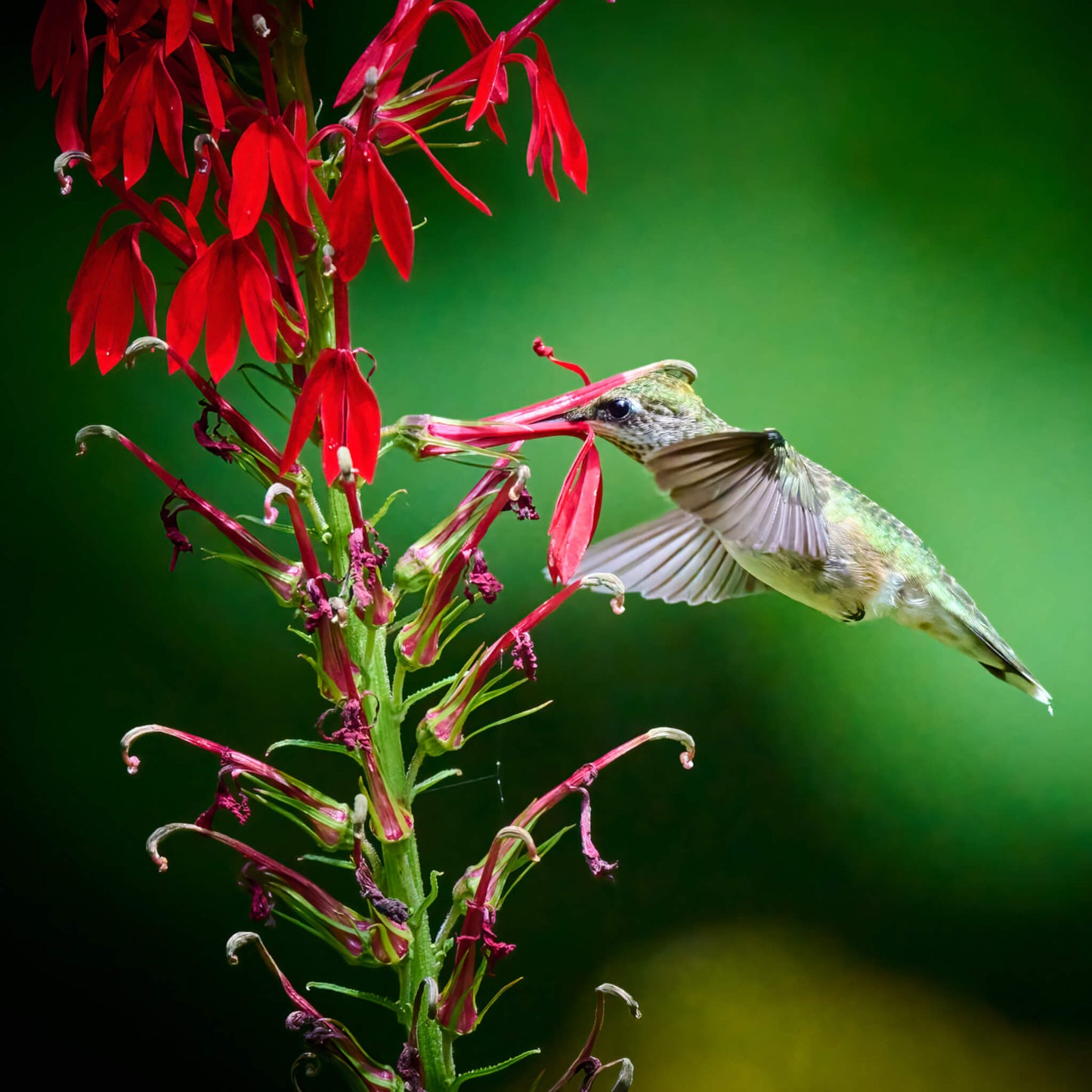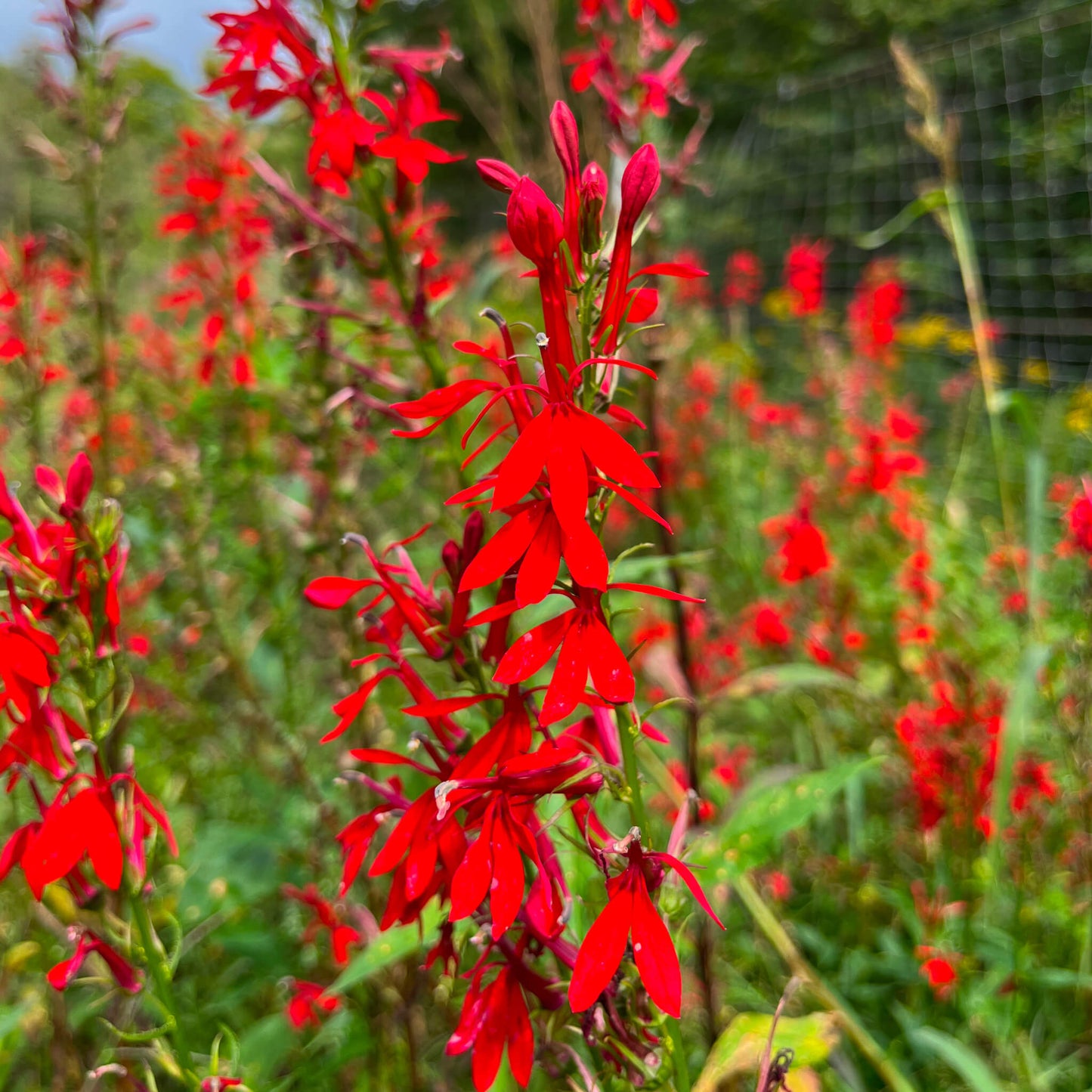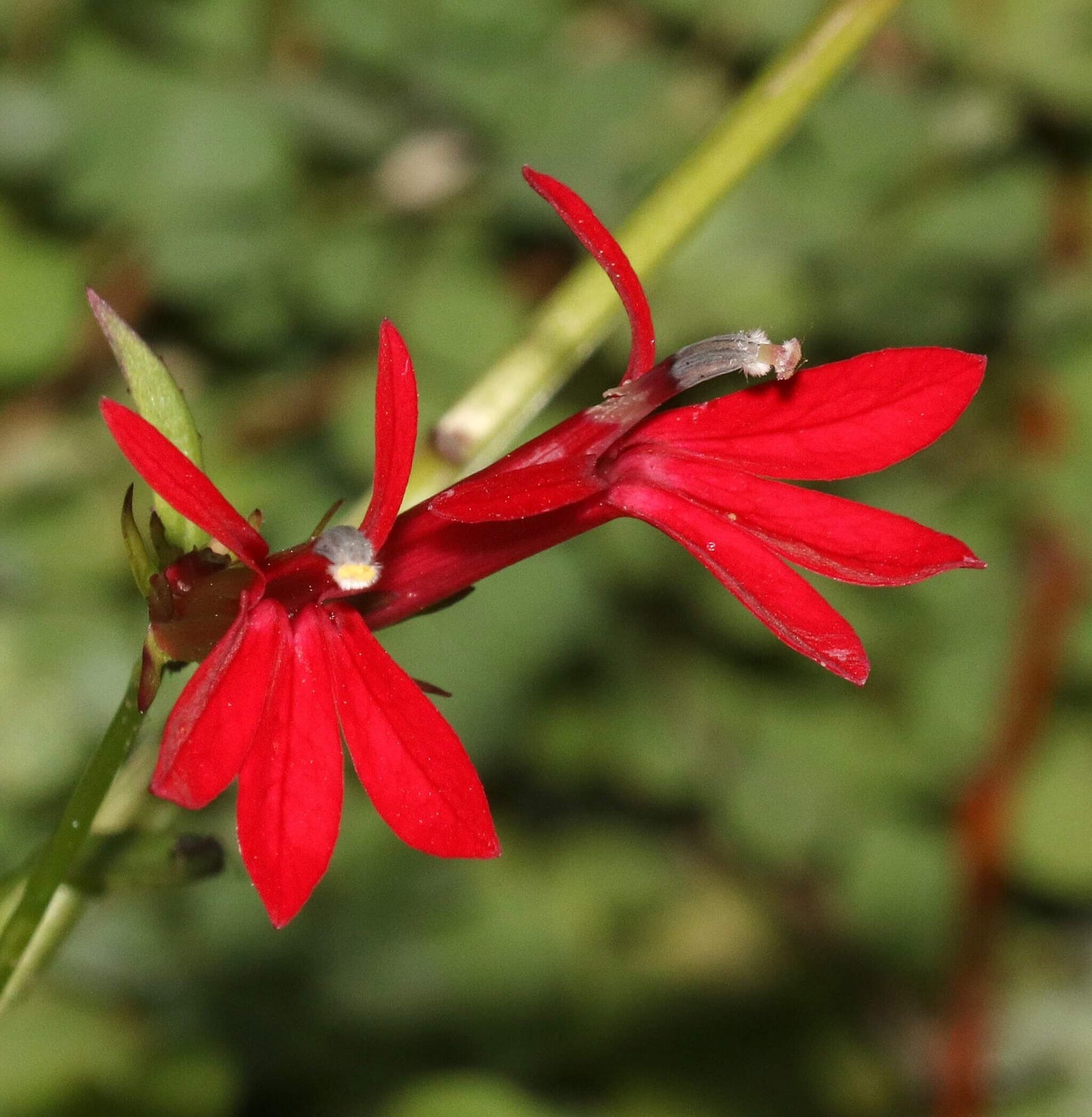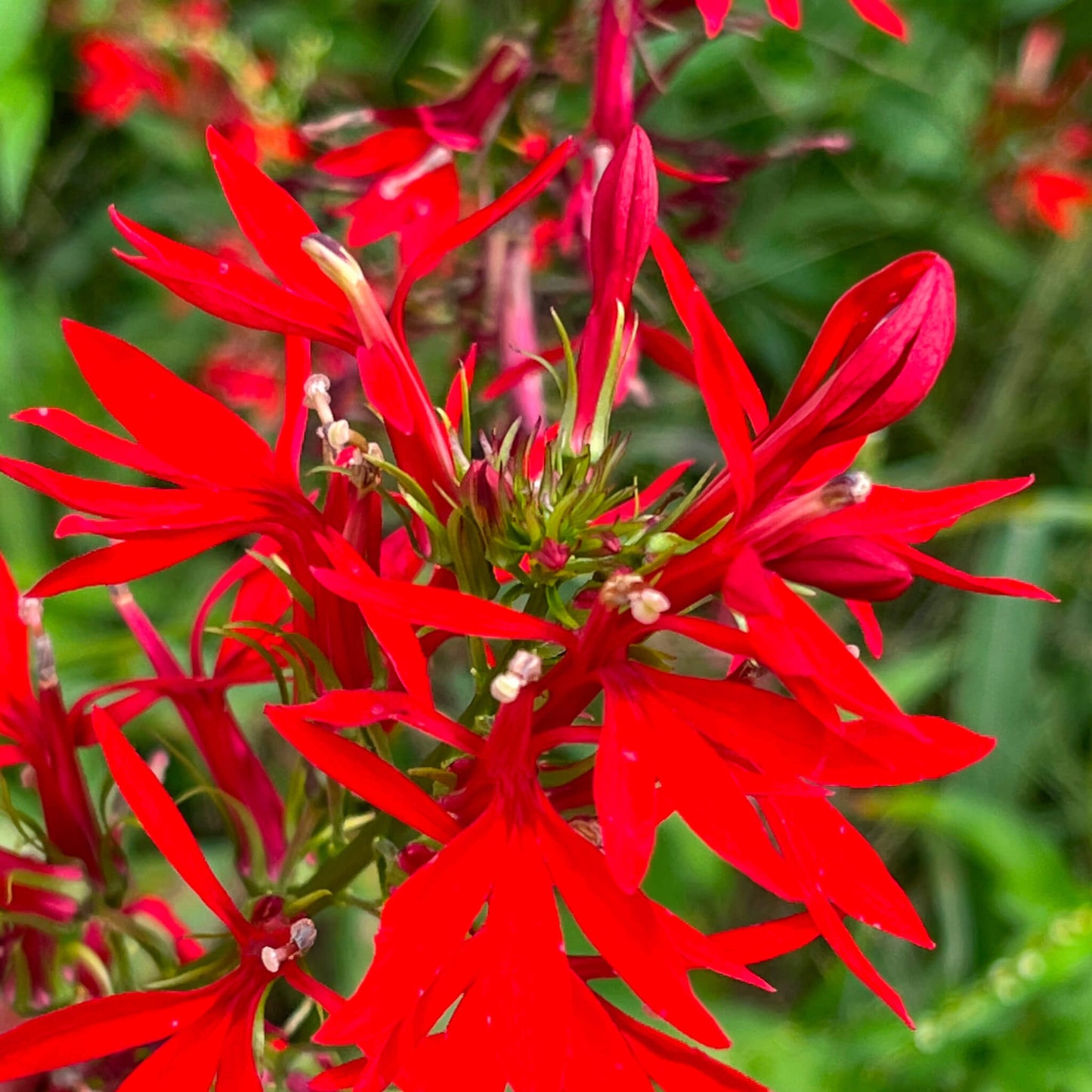For successful seedlings,
see the growing notes at the bottom of the page!
Cardinal flower (Lobelia cardinalis) is one of the most spectacular native flowers, known for its striking clusters of scarlet red flowers that immediately draw attention. In masses, its effect is even more impressive, adding a vibrant splash of colour to gardens. It typically reaches up to 120 cm in height and prefers cool, moist soils, making it an excellent choice for riverbanks, shores, and marshes. Highly attractive to hummingbirds and swallowtail butterflies (genus Papilio), this plant provides abundant nectar that supports pollinator wildlife while enhancing aquatic or humid landscapes.
Ecological Roles
Cardinal flower plays an important ecological role by attracting pollinators such as hummingbirds and Papilio butterflies, which rely on its nectar. It thrives in cool, moist soils, making it ideal for water edges and wetland areas in Quebec. By incorporating this plant to gardens, we support local biodiversity, particularly native pollinator species, while adding a burst of bright colour.
Cardinal flower seeds require cold stratification to ensure germination. See the cultivation notes below for more details.
Akène cannot assume any responsibility for the use of plants for therapeutic purposes. Always seek advice from a professional before using a medicinal or edible plant.
Sowing and Growing
Technical Details
Seeds per packet: 500
Family: Campanulaceae
Scientific name: Lobelia cardinalis
Life cycle: Perennial
Hardiness zone: 4
Soil type: Loamy to clayey
Soil moisture level: Medium to humid
Soil - additional attributes:
Light: Sun, part shade
Blooming: July to September
Spacing: 30 cm
Height: 120 cm
Deer resistance: Moderate
Stratification: 60 days
Scarification: No
Germination time: 20 to 30 days
Sowing depth: Surface





